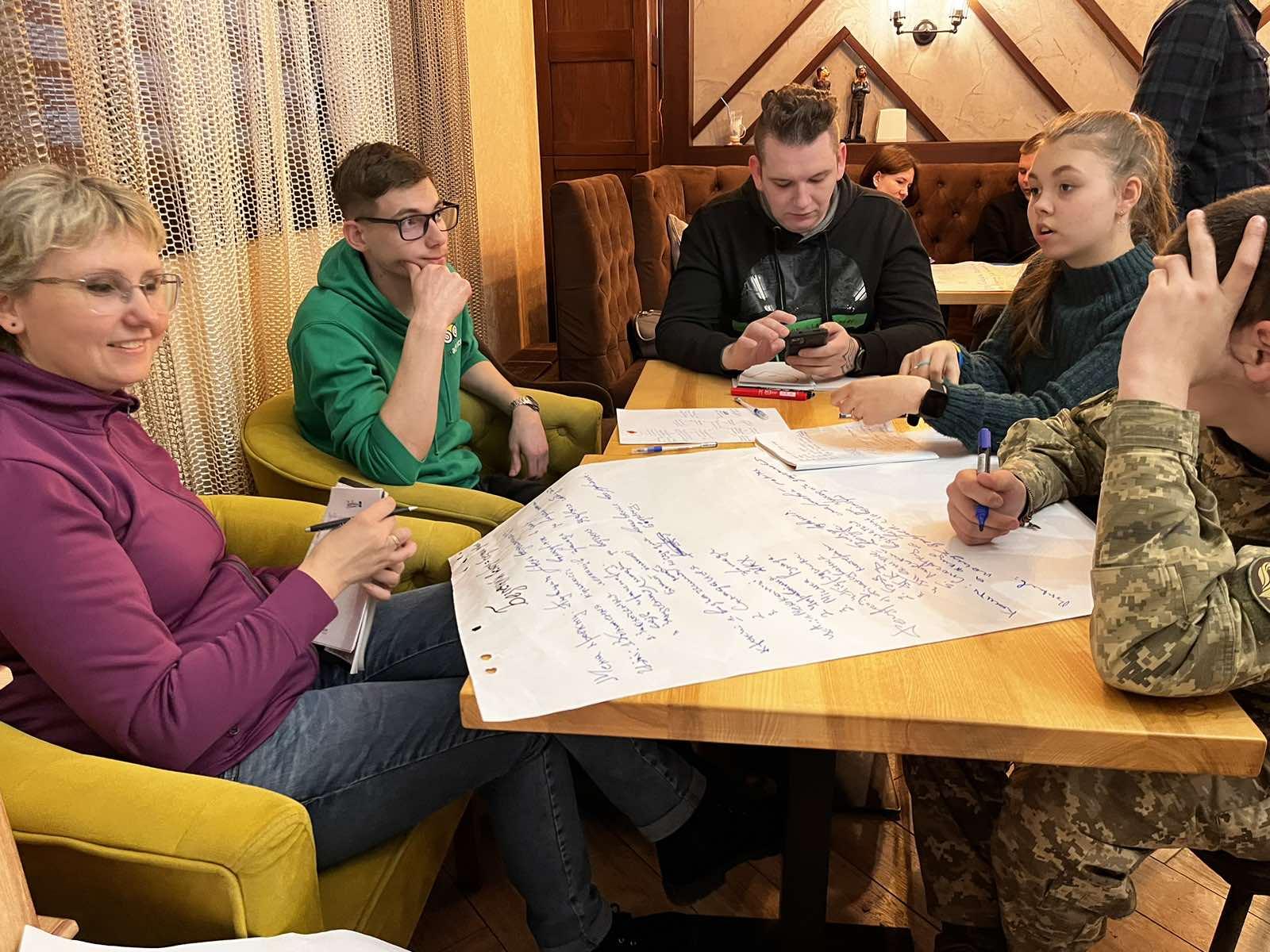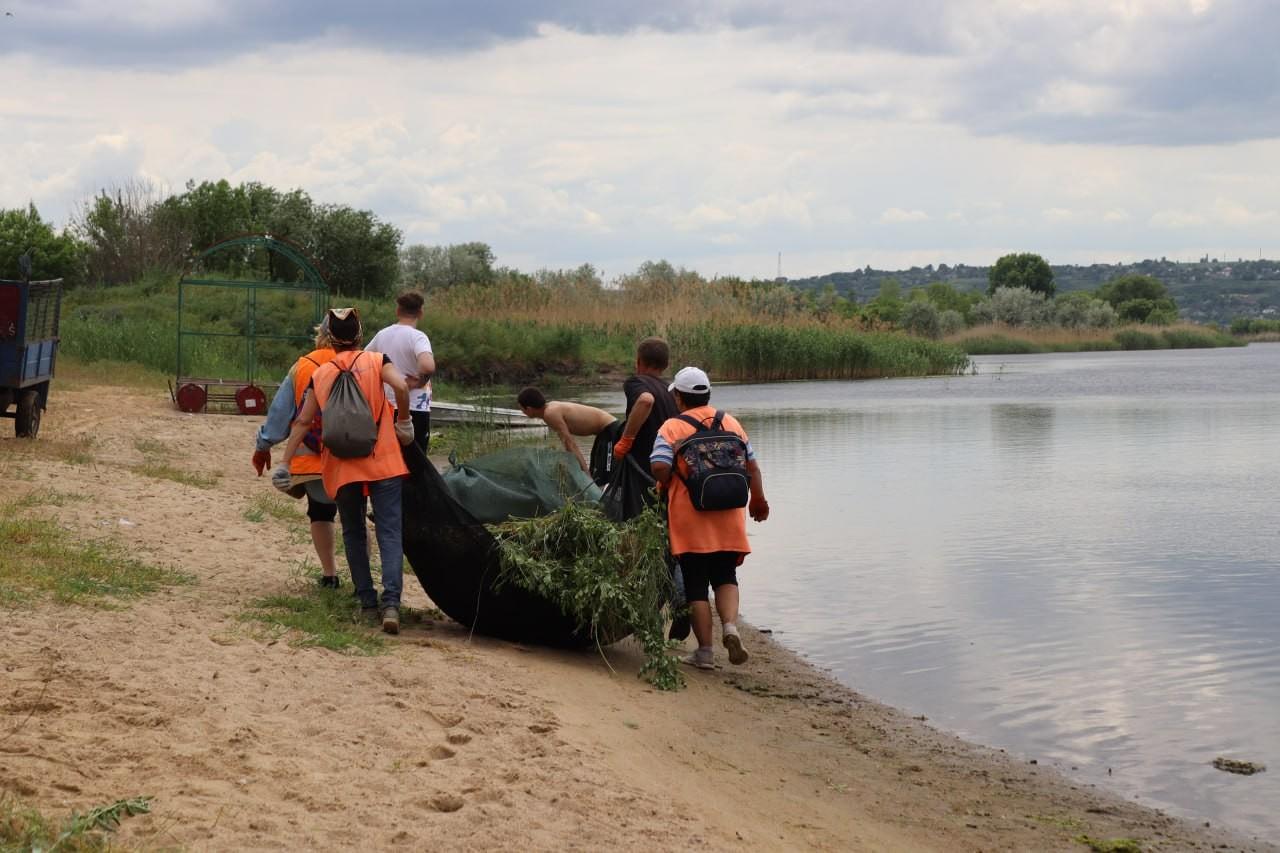
What is the problem?
At the beginning of the full-scale invasion by Russian troops, the typically quiet town of Voznesensk, in Ukraine's Mykolaiv region, became the scene of fierce gun and artillery skirmishes. The Armed Forces of Ukraine managed to stop the invaders' advance, but the city suffered significant destruction due to street battles and rocket attacks.Three bridges were blown up, while schools, kindergartens, a municipal swimming pool, and a sewage pumping station were damaged. More than 700 private houses and a five-story building were affected.
What is the solution?
Even though the community still suffers from periodic air raids from enemy drones, Voznesensk is already taking the first steps towards recovery. The city is developing appropriate programs with expert working groups, and volunteers are helping to restore destroyed buildings.
Residents see protecting the natural environment while rebuilding the human environment as the best way to overcome the consequences of the war. Their approach is not only about restoring what has been destroyed, but seizing the opportunity to build.
In Voznesensk, the NGO Mykolaiv City Development Fund (MCDF) is at the forefront of green reconstruction with the assistance of the United Nations Development Program (UNDP) in Ukraine within the framework of the Peacebuilding and Reconstruction Program, supported by the Government of Denmark. Also, the project was supported within the framework of the Environmental Policy and Advocacy Initiative for Ukraine
(EPAIU), which is carried out with the financial support of Sweden. Voznesensk City Council and Voznesensk Community Foundation became partners of the NGO Mykolaiv City Development Fund in the green restoration of the community.
How does it work?
"Our mission is eco-friendly communities"

Training on project management and participatory democracy for the green restoration of four communities of the Mykolaiv region.
MCDF has been cooperating with the community of Voznesensk for many years. In the 2000s, the foundation promoted ideas of proper civil governance and participation in partnership with local activists. Since 2010, with the foundation's support, ten such self-organized bodies have begun to represent the interests of residents of the city's micro-districts in matters of improvement and ecology. At the beginning of the war, the NGO provided financial assistance to shelling victims. Since April of 2022, MCDF has been returning to the community with ideas for green restoration.
According to Director Mykhailo Zolotukhin, implementing changes in a community is most effective when its residents are involved in the decisions. Together with the mayor, MCDF decided to create a special group to develop a plan for recovery and invited concerned residents and eco-activists to participate. The foundation also organized trainings for community residents on how to better use project management in restoration and plan green community restoration strategically.

Public discussions of challenges and ways of green restoration of the Voznesensk community.
The involvement of the public did not slow down results. After all, ithelped reveal problems related to the environment in the community, and in May 2023 the city council instructed the working group to consider this environmental assessment.
Long-term development plans that represent a vision of where the community is headed. As a rule, they must be adopted by local councils and are normally developed over seven to ten years. However, the strategy is implemented through annual development plans and programs, specific projects for which funds are allocated or attracted, Zolotukhin explains. "Each of us wants to live in a place where there is clean water and air, to consume organic products, to have well-organized territories. That is why the eco-modernized strategy should include those areas, the implementation of which will have a positive impact on the environment in the future. Based on our strategy, the formation of the green component of the plan for the recovery of our community needs to happen."
From problems to their solution
Among the urgent problems with the environment in the community are not only those brought to Voznesensk by the war. Even before the full-scale war, Voznesensk had water supply and drainage issues, a lack of green spaces, and a landfill that was 99% filled. With the onset of full-scale war, these challenges only increased.
In the spring of 2022, instead of the destroyed bridge over the small Mertvovid river, a dam was built as part of the Mykolaiv-Kyiv road. Zolotukhin says that even now, a year after its construction, one can see the first signs of an environmental catastrophe — stagnant water and a swamp in the center of Voznesensk. Due to the decrease in the water level in the Southern Bug and Mertvovid rivers, their biodiversity is under threat. The water quality in the Southern Bug, which is the basis of water supply in nearby towns and villages, also suffers.

Studying at the School of Civic Action.
Concerned people in the community united to find a solution, and MCDF, in turn, organized the School of Civic Action, where it held relevant training sessions for willing residents and eco-activists. Training participants looked for possible solutions to environmental problems in their communities and shared their observations and experiences in creating an ecologically safe space. Over a hundred residents participated in a series of round tables on eco-themes. As a result of these events, the participants have made 44 proposals for the comprehensive restoration of the community. Among them are:
- Green paradise — the creation of an ecological recreation area to improve the ecological awareness of city residents.
- Safe cycling = Safe environment — to increase the level of safe movement.
- RIVER is a project to improve the ecological situation of the Mertvovid River in Voznesensk.
- The project related to the reconstruction of the landfill of solid household waste — the creation of a composting station and a waste processing plant, the introduction of garbage cans with separate sorting of waste in all areas of the city.
- Installation of solar power plants at utility companies.
- Inventory of all trees in the community.

Cleaning on the banks of the Southern Bug River.
All these proposals require time and resources to implement, but the locals are not sitting idly by. The community's residents are already gathering for monthly eco-camps to clean natural landfills and recreation areas near the Southern Bug River.
"Preserving nature and the environment is our joint responsibility. Small actions, such as sorting garbage and maintaining cleanliness, really make a big difference in preserving the environment of our city. Common cleanings unite and help make our city cleaner and tidier," says Polina Golyk, head of the Voznesensk Youth Public Council.
Not only the survival of the community but also its development
In 2022, for the residents of front-line Voznesensk, green restoration has become not only a strategic goal but also a matter of survival. Thus, in its work, the MCDF identified the city's transition from gas to renewable energy sources as a priority task. The long-term goal is to achieve maximum decarbonization of the entire community.

Biomass boiler received by the Voznesensk community.
At the beginning of September 2023, the Voznesensk community received eco-boiler equipment that runs on biomass as part of the project Green Restoration of the Mykolaiv Region. Installation of a solid fuel boiler in winter will provide warmth and comfort to the students of the Voznesensk Gymnasium and School, patients of one of the local outpatient clinics, and workers of another municipal institution. It will also help reduce energy costs and contribute to the community's environmental sustainability. Currently, the design and estimate for the reconstruction of the boiler plant with the installation of a solid fuel boiler is being developed by order of communal enterprise Teplo-Service. To coordinate the efforts of self-government and the public to form and ensure green restoration, the Center for Green Restoration of the Territorial Community of the City of Voznesensk was created as a separate area of local self-government.
"All our work is aimed at overcoming the economic consequences of full-scale Russian armed aggression against Ukraine and is the basis for planning the community's spatial development. Therefore, we promote adopting and implementing the mentioned package of decisions of local self-government bodies," Zolotukhin shared with Rubryka. "With their help, after balancing the wishes of different groups of residents and the resources and limitations available in our territory, we will be able to establish a green restoration and forecast the green growth of the community."
Even more useful solutions!
Five steps to green reconstruction
According to Zolotukhin, the involvement of community residents in local projects is not justabout allowing them to express their opinions about how to better clean up garbage or where the water supply system needs to be repaired. First of all, it allows people to participate in forming the vision of the green reconstruction of the community for the better in the future. The head of the NGO shares his own advice, which could be useful for other communities — he offers five steps that communities can take to start green reconstruction.
- Create a working group at the initiative of ecoactivists. It can be both a collaboration of activists, officials, and authorities and a working group of the local chairman/executive committee of the council/permanent deputy commission.
- Engage effective mechanisms of participatory democracy — for example, the public youth council.
- Conduct public studies and discussions of challenges of green recovery. Finding experts to implement specific surveys is worth considering, with support from both international and local funding sources.
- Organize training of activists and officials on the methods of green recovery. In particular, study legislation and green technologies, existing practices of their application based on project management, and eco-performance indicators.
- The working group, together with the public council, should organize a broad participation of residents in forming a package of proposals for local recovery solutions — these can be local strategies, programs, or recovery plans.
The director of Fund for the Development of the City of Mykolaiv adds that a quality strategy, a comprehensive recovery program, and a recovery plan are also grounds for quickly attracting investments, receiving international and state aid, and planning specific measures for further recovery and development. This gives real opportunities for Ukrainian communities to take their future into their own hands – and to improve it.







